Khitan alphabet
Origin
The Khitan people, who dominated a large part of Manchuria between 916 and 1125 AD, had two different alphabets - the "large script", which came into use in about 920 AD, and the "small script", which was reputedly created in about 925 AD by the Khitan scholar Diela, who found himself inspired by the Uighur alphabet.
The two scripts were used in parallel and seem to have little in common in terms of the forms of the characters and the way they were assembled into compound characters.
Used to write
The people used to write Khitan, an extinct Altaic language which was once spoken in Manchuria. The language and the Khitan people were known as Liao in Chinese.
|
The "Large Script"
|
|
This form was written in vertical columns running from top to bottom and from the right to the left. Some of the characters were taken from Chinese, while others were independent inventions.
|
|
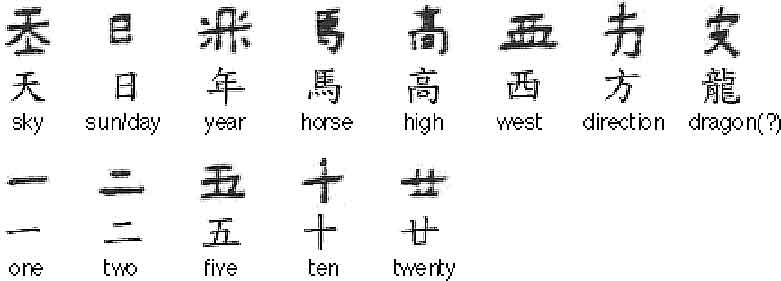 |
|
Selection of "large script" characters in combination with the Chinese characters, on the basis of which they seem to have been modelled. |
|
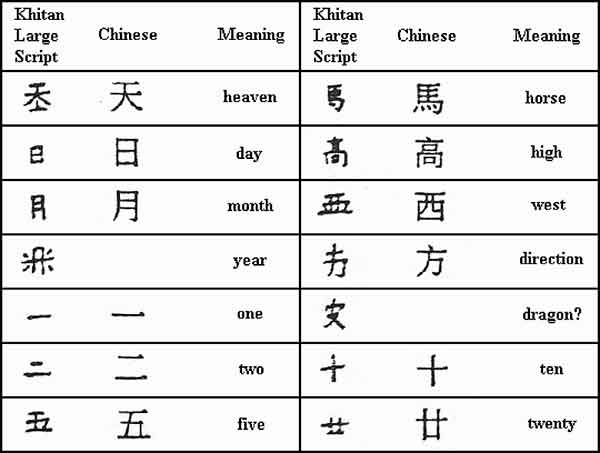 |
|
The "Small Script"
|
|
consists of 370 characters, including logograms, syllabograms and probably some phonograms.
|
|
Selection of "small script" characters |
|
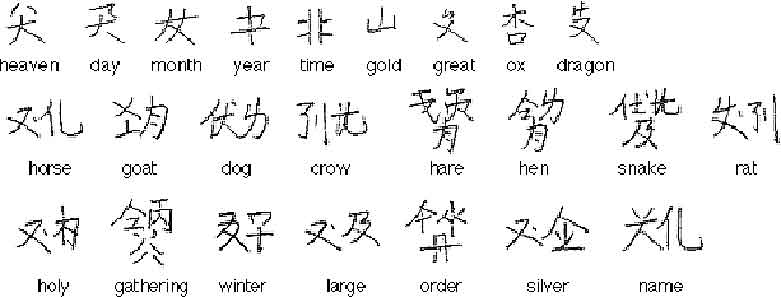 |
|
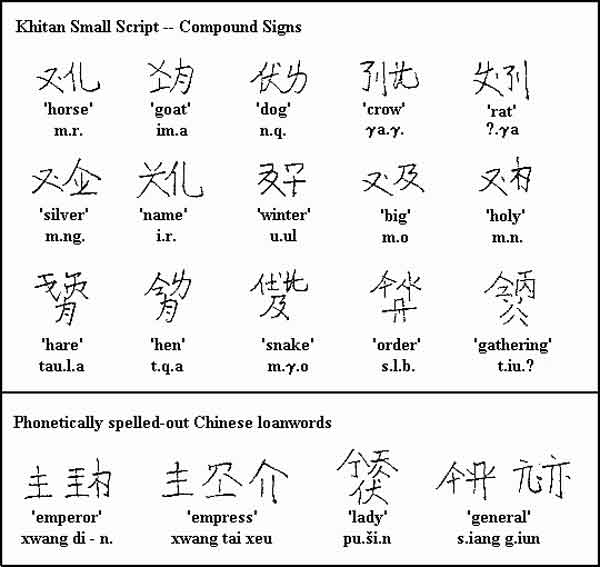 |
|
Khitan "small script" numerals |
|
 |
Jurchen alphabet
Origin
The Jurchen or the Southern Tungusic alphabet was created by Wanyan Xiyin in 1120. It was modelled on the basis of the Khitan alphabet and contains a large number of characters from the Chinese.
The Jurchen people had lived in the north-eastern part of Manchuria before the 12th century. Then, in 1115 they conquered a large part of northern China, including the lands of the Khitan people, and set up the Jin dynasty. The Jin dynasty fell to the Mongols in 1234. The Jurchen people became known as Manchus in the 17th century, when they conquered the whole of China and established the Qing dynasty (1680-1911).
.
|
Notable features |
|
– According to the Sino-Jurchen glossary, the Jurchen alphabet contains 720 characters - a mixture of logograms, which represent whole words without any phonetic elements, and phonograms, which represent sounds.
Compound words consisting of two or more characters were also used.
|
|
– The Jurchen characters have a system of radicals similar to Chinese characters and are ordered according to radical and stroke count. |
Used to write
In earlier times the members of the Jurchen people of the Tungusic branch of the Altaic language family used to write Jurchen/Manchu. In Xinjiang, in the west of China, there are about 27,000 people known as Sibe (Xibo or Sibo) who speak a language closely related to Manchu. They were moved to the region in 1764 by the Qing emperor Qianlong.
|
Jurchen words |
|
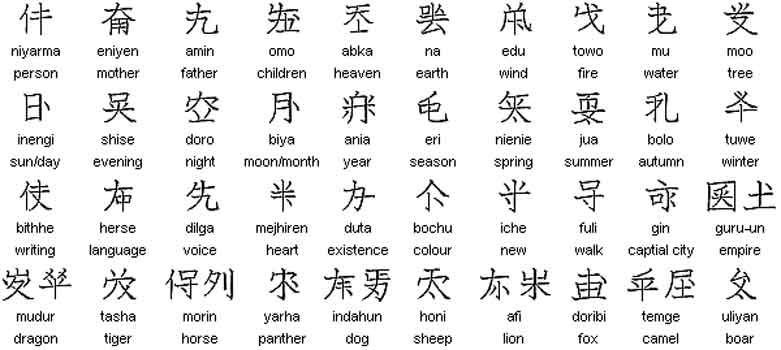 |
|
Jurchen numbers |
|
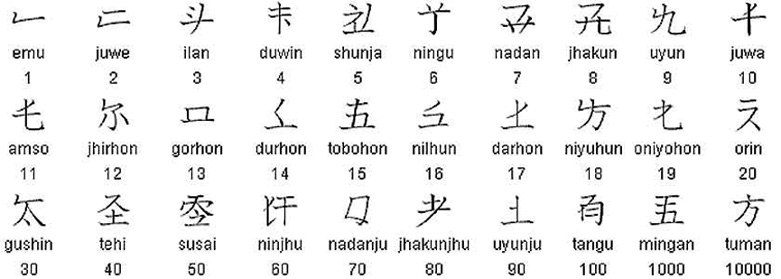 |
|
Text in Jurchen |
|
|
|
December 2010 – Albi
|
PageTop

|
